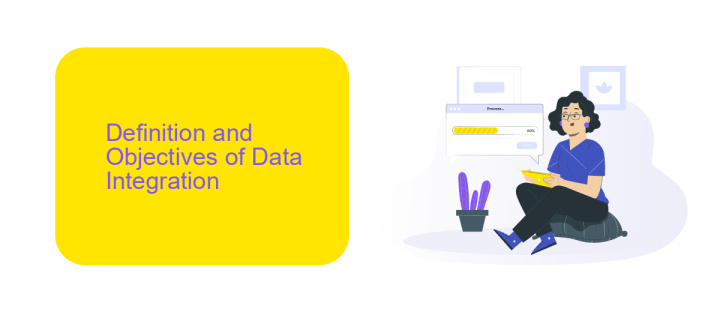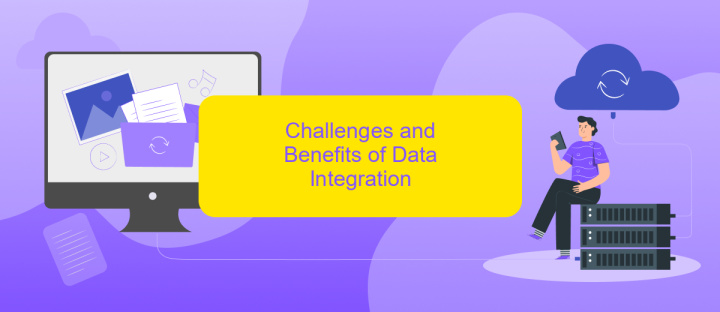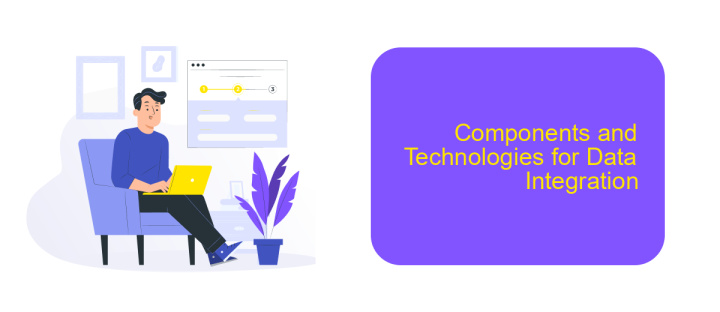Define Data Integration
Data integration is the process of combining data from different sources to provide a unified view. This practice is essential for organizations aiming to leverage diverse data sets to inform decision-making, enhance operational efficiency, and gain competitive advantage. By integrating data, businesses can overcome information silos, ensure data consistency, and enable comprehensive analysis, ultimately driving smarter strategies and improved outcomes.
Introduction
Data integration is a critical process for organizations looking to harness the full potential of their data. By combining data from various sources into a single, unified view, businesses can make more informed decisions, improve operational efficiency, and gain a competitive edge. The importance of data integration cannot be overstated in today's data-driven world.
- Combines data from multiple sources
- Enhances decision-making capabilities
- Improves operational efficiency
- Provides a unified view of data
One of the tools that facilitate seamless data integration is ApiX-Drive. This service allows businesses to automate data transfer between various applications, reducing the need for manual intervention and minimizing errors. By leveraging such tools, organizations can focus more on analyzing data rather than managing it, thereby driving innovation and growth.
Definition and Objectives of Data Integration

Data integration is the process of combining data from different sources to provide a unified view. This process involves collecting, cleaning, and transforming data to ensure it is accurate, consistent, and usable. Data integration is crucial for organizations that rely on diverse data sources, such as databases, cloud services, and third-party applications, to make informed decisions. By integrating data, businesses can improve data quality, streamline operations, and gain valuable insights.
The primary objectives of data integration include enhancing data accessibility, improving data accuracy, and enabling real-time data analysis. Effective data integration helps organizations reduce data silos, ensuring that all departments have access to the same information. Tools like ApiX-Drive facilitate this process by offering seamless integration between various applications and services, allowing businesses to automate data workflows and improve efficiency. Ultimately, data integration supports better decision-making and drives business growth by providing a comprehensive view of the organization’s data landscape.
Challenges and Benefits of Data Integration

Data integration is a critical process for modern businesses, enabling them to consolidate information from various sources into a unified view. However, this process comes with its own set of challenges and benefits.
- Data Quality Issues: Integrating data from multiple sources can lead to inconsistencies and inaccuracies.
- Security Concerns: Ensuring data security during integration is a major challenge, especially when dealing with sensitive information.
- Complexity: The integration process can be technically complex, requiring specialized skills and tools.
- Cost: Implementing data integration solutions can be expensive, both in terms of time and resources.
- Scalability: As the volume of data grows, maintaining efficient integration can become increasingly difficult.
Despite these challenges, the benefits of data integration are substantial. It enhances decision-making by providing a comprehensive view of data, improves operational efficiency, and fosters better collaboration across departments. Tools like ApiX-Drive simplify the integration process by offering automated workflows and real-time data synchronization, making it easier for businesses to manage and utilize their data effectively.
Components and Technologies for Data Integration

Data integration involves the consolidation of data from various sources into a unified view, enabling seamless data flow across different systems and applications. This process relies on several key components and technologies to ensure data is accurately and efficiently integrated.
One essential component is the Extract, Transform, Load (ETL) process, where data is extracted from source systems, transformed into a suitable format, and loaded into a target system. Additionally, data integration platforms and middleware play a crucial role in facilitating communication between disparate systems.
- ETL Tools: Tools like Apache NiFi and Talend streamline the ETL process.
- API Management: Platforms such as ApiX-Drive enable seamless integration through APIs, allowing for real-time data exchange.
- Data Warehousing: Solutions like Amazon Redshift and Google BigQuery store integrated data for analysis.
- Data Quality Tools: Tools like Informatica and Trifacta ensure the accuracy and consistency of integrated data.
Technologies like cloud-based integration services and machine learning are also enhancing data integration capabilities. For instance, ApiX-Drive offers automated workflows that simplify the integration process, reducing the need for manual intervention and ensuring data is always up-to-date.


Applications and Examples of Data Integration
Data integration is crucial for various applications across industries, enabling seamless data flow and enhanced decision-making. In the healthcare sector, integrated data from patient records, lab results, and treatment histories can lead to more accurate diagnoses and personalized treatment plans. In finance, data integration helps in consolidating information from multiple sources, such as transaction records, market data, and customer profiles, to provide a comprehensive view for better risk management and customer service.
Businesses often use tools like ApiX-Drive to automate and simplify the data integration process. ApiX-Drive allows companies to connect disparate systems and applications without the need for extensive coding, making it easier to synchronize data across platforms. For example, e-commerce platforms can integrate sales data from different channels into a single dashboard, providing real-time insights and improving inventory management. By leveraging such tools, organizations can ensure data consistency, reduce manual errors, and enhance overall operational efficiency.
FAQ
What is data integration?
Why is data integration important?
What are the common challenges in data integration?
How can businesses automate data integration processes?
What is ApiX-Drive and how does it help with data integration?
Apix-Drive is a universal tool that will quickly streamline any workflow, freeing you from routine and possible financial losses. Try ApiX-Drive in action and see how useful it is for you personally. In the meantime, when you are setting up connections between systems, think about where you are investing your free time, because now you will have much more of it.

